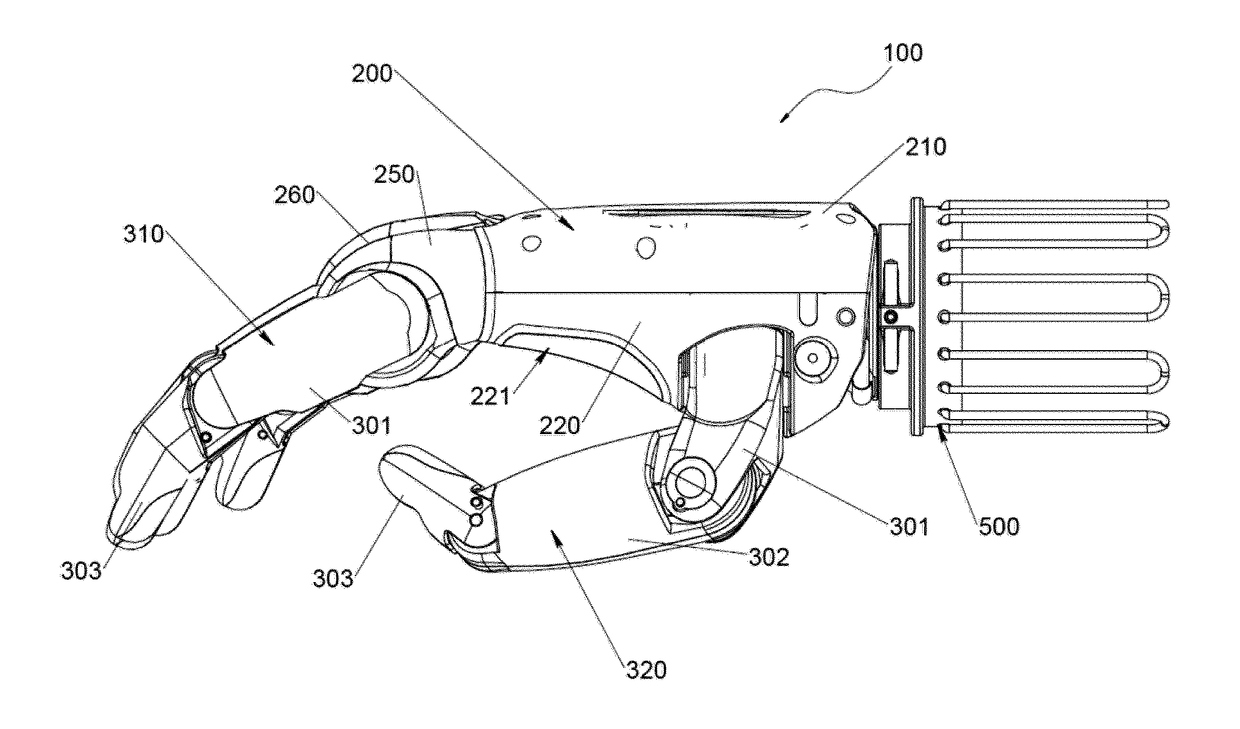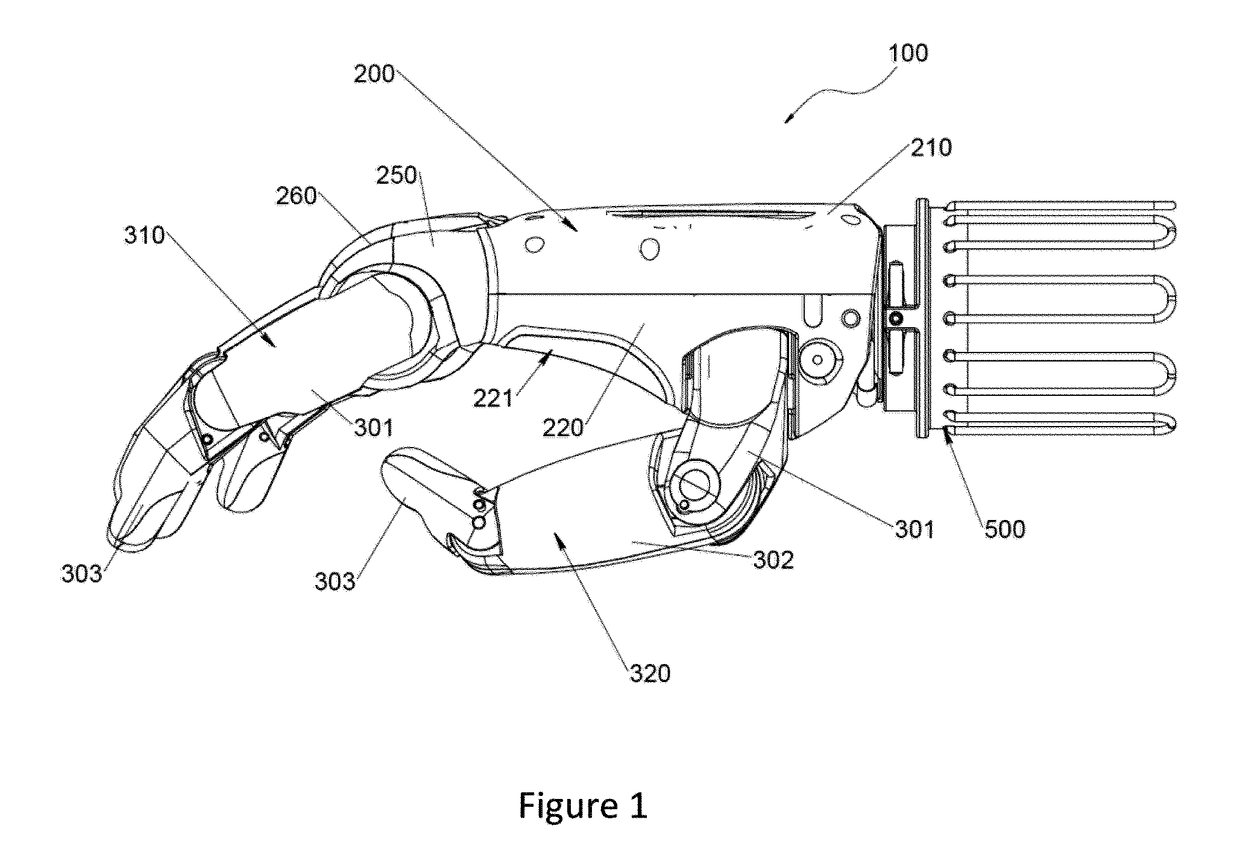Automated hand
a hand and hand technology, applied in the field of automatic hands, can solve the problems of unnatural hand, many hands are necessarily large and bulky, and the hand is not natural, and achieve the effect of reducing the lateral movement of the thumb
- Summary
- Abstract
- Description
- Claims
- Application Information
AI Technical Summary
Benefits of technology
Problems solved by technology
Method used
Image
Examples
first exemplary embodiment
[0171]The automated hand 100 of the first exemplary embodiment is shown in FIGS. 1 to 25 and comprises a palm 200 and two or more digits 300 extending from the palm 200. Each digit may be attached to the palm by a knuckle joint. The digits are configured to move between an open, substantially flexed (extended) position, and a substantially closed, gripping position. A digit 300 may be in the form of a finger 310 or thumb 320. In one example, the hand 100 may comprise two digits 300, one being a finger 310 and the other being a substantially opposing thumb 320. In another form, the hand 100 may comprise four or more fingers 310 and a substantially opposing thumb 320. In yet another form, the hand 100 may comprise only two or more fingers 310. It is envisaged that in yet another form, the hand 100 may comprise one or more fingers 310 and two or more thumbs 320, although this is not a preferred embodiment because it is an unnatural looking hand.
[0172]The hand 100 of the invention also ...
second exemplary embodiment
[0416]FIGS. 26 to 66 show an automated hand according to a second embodiment employing a different thumb rotation locking mechanism, wrist locking mechanism, overload knuckle clutch, removable grip plates and related features.
[0417]Those parts that are equivalent to corresponding parts in the first embodiment have been given the same numbering and the above description should be referenced in relation to those parts. The metacarpal brace has the same properties described in relation to the previous exemplary embodiment. The actuator described below includes a connector housing the actuator although a connector need not necessarily house an actuator in alternate embodiments.
Thumb Rotation Locking
[0418]Referring now to FIGS. 26 to 30 an alternate thumb design is shown. Thumb 701 has an actuator 702 provided at its proximal end (including the actuator housing) which is also its point of attachment to palm 704. A resilient mount 703 is mounted to palm 704 and includes a cavity dimension...
PUM
| Property | Measurement | Unit |
|---|---|---|
| temperature | aaaaa | aaaaa |
| angular rotation | aaaaa | aaaaa |
| force | aaaaa | aaaaa |
Abstract
Description
Claims
Application Information
 Login to View More
Login to View More - R&D
- Intellectual Property
- Life Sciences
- Materials
- Tech Scout
- Unparalleled Data Quality
- Higher Quality Content
- 60% Fewer Hallucinations
Browse by: Latest US Patents, China's latest patents, Technical Efficacy Thesaurus, Application Domain, Technology Topic, Popular Technical Reports.
© 2025 PatSnap. All rights reserved.Legal|Privacy policy|Modern Slavery Act Transparency Statement|Sitemap|About US| Contact US: help@patsnap.com



